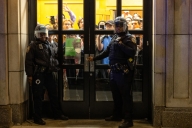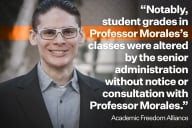You have /5 articles left.
Sign up for a free account or log in.
You'd think that those low-income college students who, despite the odds, applied for federal financial aid, enrolled in college, and had early academic success as freshmen would continue to do what's needed to persist in college. But while many of them do, almost 20 percent don't take what would seem to be a pretty basic step toward continued success: re-filing the Free Application for Federal Student Aid for a second year.
"They may not know they have to renew, they're likely to be working and really busy, and at some many community colleges, particularly, they probably have fewer advising supports," said Ben Castleman, an assistant professor of education and public policy at the University of Virginia's Curry School of Education.
A new study by Castleman and a colleague, Lindsay C. Page, suggests that straightforward and low-cost communication that encourages first-year students at community colleges to submit a FAFSA form significantly increases the chance that they return for a second year.
The new study built on previous work that Castleman and Page have done on fighting "summer melt," designed to identify low-cost ways to encourage low-income students who were bound for college to actually enroll. In partnership with uAspire, a Massachusetts-based nonprofit group that focuses on helping students prepare for and afford college, the researchers identified about 800 students who had received either text messages or peer mentoring aimed at encouraging college enrollment while they were in high school.
The researchers split that group into two -- half received a series of text messages from uAspire from January to August 2013, and half did not. The messages focused on the importance of financial aid, of filling out the FAFSA again, and of maintaining satisfactory academic progress to maintain federal eligibility. Students were mostly directed to resources at their institutions, but if they responded to the messages and asked for help from uAspire, they were referred to an adviser.
The intervention had no noticeable effect on the freshman-to-sophomore year persistence of those enrolled at four-year institutions, which was high (87 percent) to begin with.
And while the researchers were unable to tell exactly how many of the students in the control group actually re-filed the FAFSA form -- that information is not publicly available -- the community college enrollees who received the series of encouraging text messages were 12 percentage points likelier to persist into their second year than were those in the control group (76 percent vs. 64 percent).
That is likely the case, the scholars surmised, because "there is greater room for improvement on FAFSA re-filing and sophomore year persistence within the community college population, and ... community college students may be particularly responsive to the informational and behavioral content of the text messages we sent."
The applicability of this study to other low-income college students is limited by a couple of factors: first, college-going and college persistence rates are comparatively strong in Massachusetts, where the study was conducted, and second, the students in this study had a prior relationship with uAspire, and so may have been predisposed to respond to messages they received from a nonprofit group they trusted.
But given how inexpensive and scalable this approach is -- the researchers estimate the cost of the intervention to be $5 per student -- "this seems to be a low-cost, easily implementable strategy that lots of different college access groups and state agencies could implement to provide freshmen with information about financial aid renewal," Castleman said in an interview.








